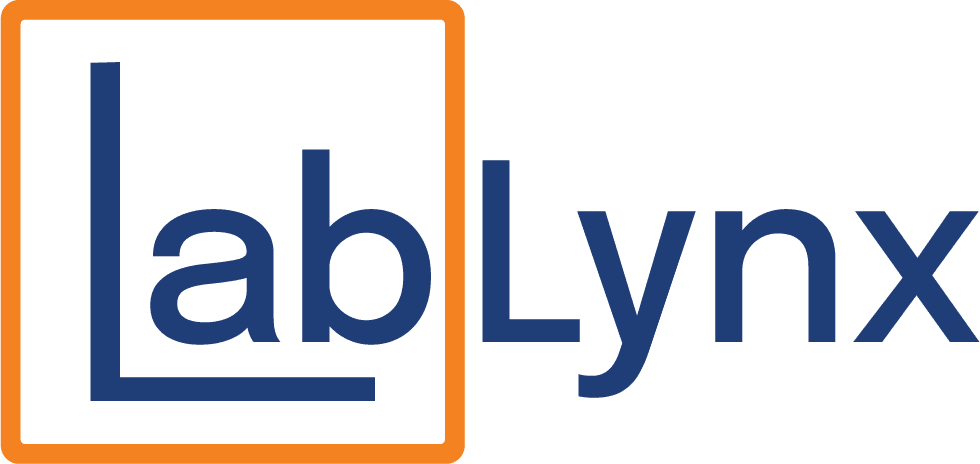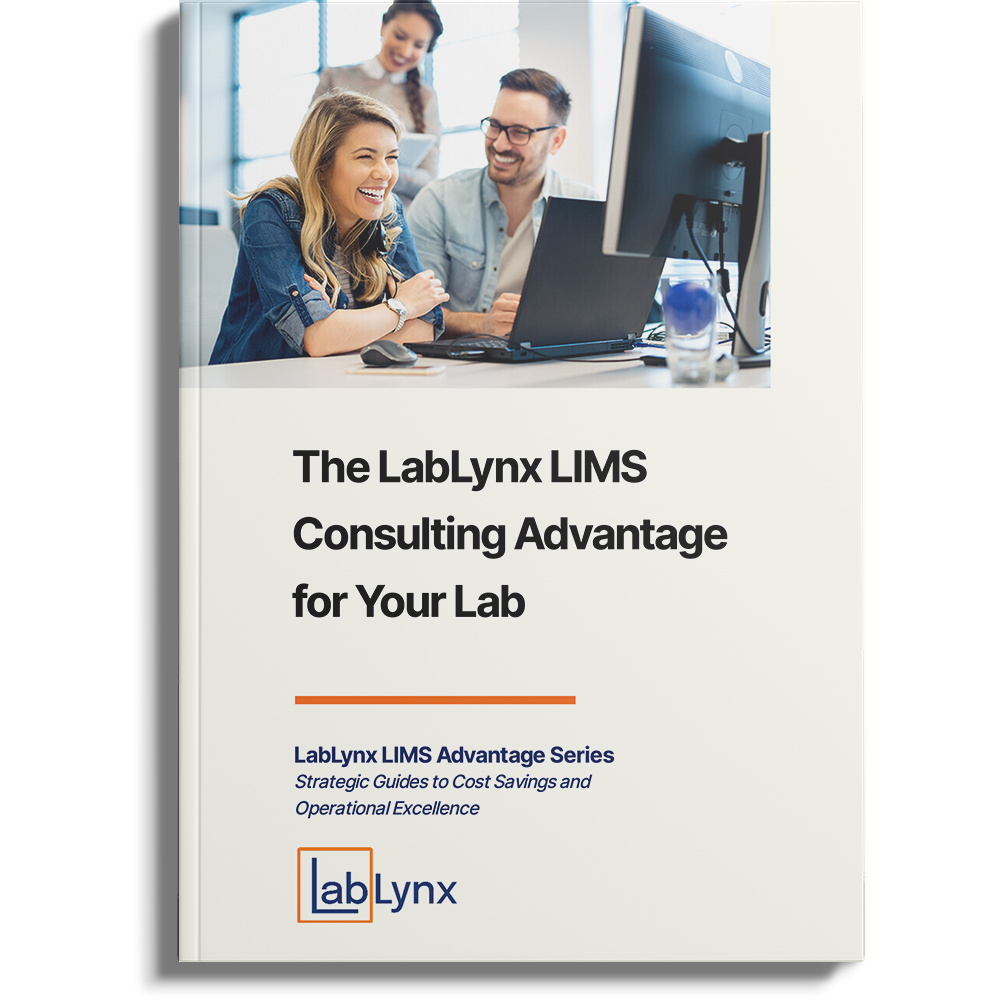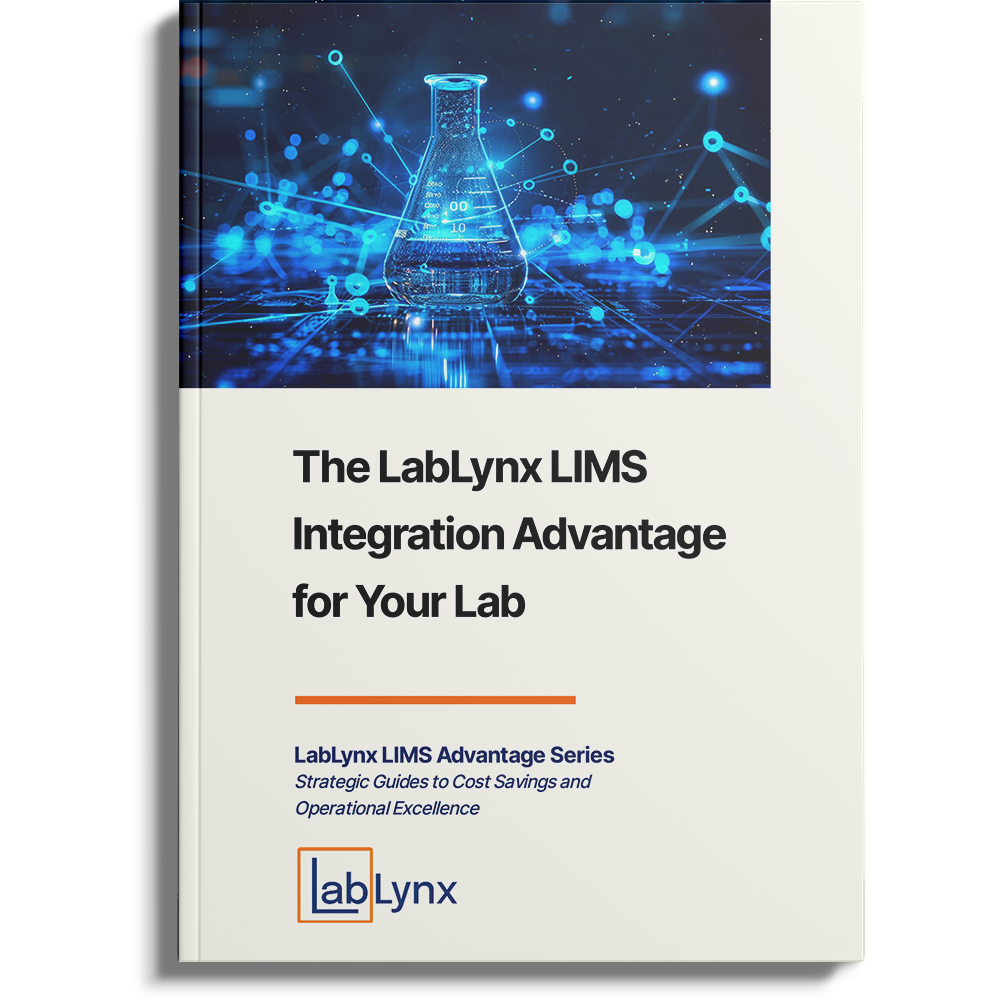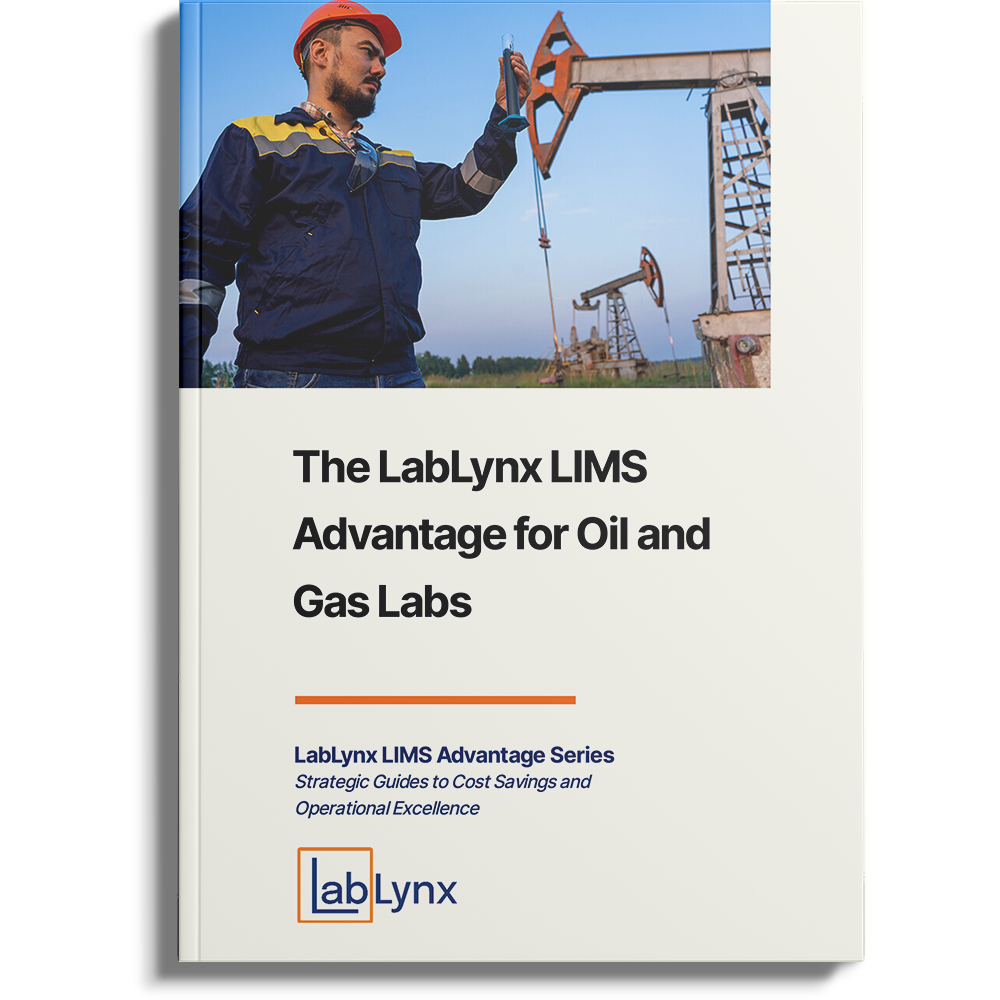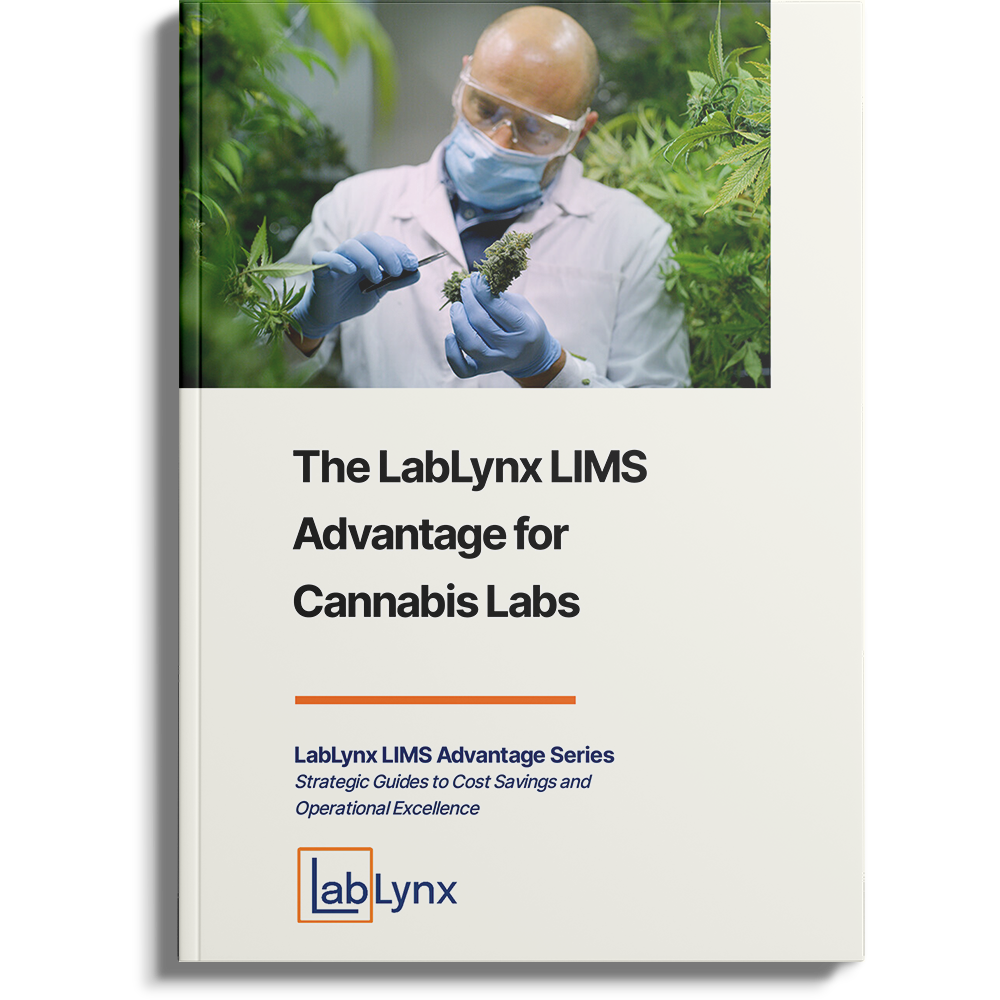
History of food and beverage testing and regulation
The history of laboratory-based food and beverage tasting is scattered, with little being documented about foodborne illness and food safety until the nineteenth century. However, with a better understanding of bacteria and their relationship to disease, more was being said about the topic by the mid-to late-1800s.[1] In the U.S. Northeast during the 1860s, recognition was growing concerning the threat that tainted milk from dairy cows being fed distillery byproducts had to human health. Not only was the milk generated from such cows thin and low in nutrients but it was also adulterated with questionable substances to give it a better appearance. This resulted in many children and adults falling ill or dying from consuming the product. The efforts of Dr. Henry Coit and others in the late 1800s to develop a certification program for milk—which included laboratory testing, among other activities—eventually helped plant the seeds for a national food and beverage safety program.[2]
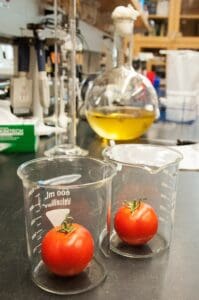 Roughly around the same time, during the 1880s, Britain saw more public health awareness develop regarding digestive bacterial infections. “As deadlier infections retreated,” argues social historian Anne Hardy, “food poisoning became an increasing concern of local and national health authorities, who sought both to raise public awareness of the condition as illness, and to regulate and improve food handling practices.”[3] This led to further efforts from public health laboratories to promote the reporting and tracking of food poisoning cases by the 1940s.[3] During that time, Clostridium perfringens was being identified as a common cause of foodborne illness[1], and today it is recognized by the Centers for Disease Control and Prevention (CDC) as one of the top five provocateurs of foodborne illness.[7]
Roughly around the same time, during the 1880s, Britain saw more public health awareness develop regarding digestive bacterial infections. “As deadlier infections retreated,” argues social historian Anne Hardy, “food poisoning became an increasing concern of local and national health authorities, who sought both to raise public awareness of the condition as illness, and to regulate and improve food handling practices.”[3] This led to further efforts from public health laboratories to promote the reporting and tracking of food poisoning cases by the 1940s.[3] During that time, Clostridium perfringens was being identified as a common cause of foodborne illness[1], and today it is recognized by the Centers for Disease Control and Prevention (CDC) as one of the top five provocateurs of foodborne illness.[7]
By the end of the 1950s, the Hazard Analysis and Critical Control Points (HACCP) quality control method seeds were planted when Pillsbury began working with NASA to ensure safe foods for astronauts. The value of Pillsbury and NASA’s methodology became apparent to the food and beverage industry by 1972, and other organizations began adopting HACCP for food safety.[4][5] By 1996, the Food Quality Protection Act of 1996 mandated HACCP for most food processors and improved pesticide level calculations.[5] With the FDA’s Food Safety Modernization Act of 2011, the FDA was given more enforcement authority and tools (like HACCP) to improve the backbone of the U.S. food and water supply.[6] Through all this, the laboratory has undoubtedly become a critical component of risk-based safety assessments of food and beverage products.
The roles a laboratory may have in the food and beverage industry
Laboratories directly and tangentially related to the food and beverage industry play several roles, depending on where they’re situated. These roles are important in the greater scheme of industry activities, providing several benefits to society. As gleaned from prior discussion and other sources, these laboratory roles can be broadly broken into three categories: research and development (R&D), pre-manufacturing and manufacturing, and post-production regulation and security.
R&D roles
The laboratory participating in this role performs one or more tasks related to the development or improvement of a food, beverage, additive, or spice. This often leads to a commercial formulation with the “necessary details required to scale and produce your [food or beverage] in a consistent, efficient, and safe manner.”[8] Even packaging solutions are targets for R&D labs in the food and beverage industry.[9] The R&D lab may appear outside the manufacturing facility proper via a third-party lab, but not necessarily always, with some companies dedicating space for R&D within the organization. Food and beverage R&D labs may work towards improving packaging, testing a product’s shelf life (i.e., stability), conducting flavor or aroma analysis, developing and innovating foodstuffs, reformulating existing products, and researching genetic modifications to ingredients. The end user benefits by having fresher foods that are culinarily pleasing, more nutritious, and safer for consumption.
Pre-manufacturing and manufacturing roles
The laboratory participating in these roles performs one or more tasks related to the preparative (i.e., pre-manufacturing) or quality control (i.e., manufacturing) tasks of food and beverage production. Preparative work such as caloric and nutritional analysis may happen in various contexts, from inside the R&D lab to the manufacturing facility’s lab, if it has one. A third-party lab may also conduct this work, or it may even be performed using non-laboratory techniques such as food composition database analysis.[10][11] Allergen testing works similarly, though the manufacturer ideally uses a full set of best practices for food allergen management and testing, from confirming allergens (and correct labeling) from ingredients ordered to performing final production line cleanup (e.g., when a new allergen-free commercial formulation is being made or unintended contamination has occurred).[12] The end user benefits from these caloric, nutritional, and allergen analysis activities by providing a more transparent window into what they are consuming and through laboratory activities that can better ensure end users’ attempts at maintaining their good health. Finally, laboratory testing can also be found along the production chain in the manufacturing facility itself. This type of testing is couched as quality control testing, primarily, or as quality assurance, secondarily. Some of this analysis may be integrated into the production workflow or appear separately in an associated quality lab. Regardless of analytical location, the quality control lab benefits society by being a critical component of an overall quality management system that better ensures the safety of those consuming the final product.
Post-production regulation and security roles
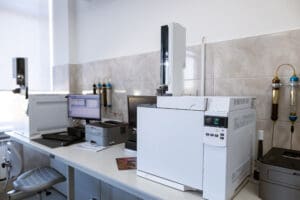
The laboratory participating in these roles performs one or more tasks relating to the post-production examination of foods and beverages for regulatory, security, or accreditation purposes. This type of testing examines raw ingredients, consumable products, and packaging found not only in a production facility but also in locations such as shipping docks, farms, grocery stores, and more. Labs are often third parties accrediting a producer to a set of standards, ensuring regulatory compliance, conducting authenticity and adulteration testing, conducting security checks at borders, and applying contamination testing as part of an overall effort to track down the source of a foodborne illness. In the last case, the lab may not be a traditional “food and beverage” lab but rather a public health laboratory, highlighting the human safety elements associated with our food and water supplies. In addition to ensuring a safer food supply, society also benefits from these and similar labs by holding producers legally accountable for their production methods and obligations.
The LabLynx ELab LIMS Solution for Your Food Safety Testing Lab
While the specific business needs may differ, all food safety testing laboratories share a common goal: delivering consistent, reliable test results quickly. This becomes challenging when your food testing lab relies on manual processes, paper forms, and spreadsheets stored on various computers.
Along with accuracy and TAT, reliable sample tracking, workflow management, inventory management, instrument maintenance, calibration management, and reporting are also essential features in a LIMS. Most importantly, these must be flexible enough to support the lab as it grows and changes without needing expensive development at every turn. Flexibility means longevity, which means maximum return on investment (ROI).
The LabLynx ELab LIMS is the most flexible LIMS on the market, with over two decades of experience. Authorized users can easily configure it through the “front end” user interface (UI). It can also be customized through back-end development by our experienced, professional developers to meet your lab’s specific needs.
The LabLynx LIMS offers a wide array of features to enhance your food safety testing lab’s productivity, replace manual processes, eliminate common pre-analytical errors, and elevate the quality of service. By providing a centralized source for auditable data, your food safety testing lab will produce higher-quality and faster results while boosting productivity with the powerful features in ELab LIMS.
Key features and benefits of the LabLynx ELab LIMS include:
- Improve efficiency and quality control with the integration of instruments. Consolidating your lab’s data improves efficiency and eliminates errors caused by duplication.
- Maintain optimal operation efficiency with a LIMS that spans multiple departments and allows you to track your samples from accessioning to result reporting across all departments in your lab. Monitor the consumption of supplies and automatically generate replenishment orders.
- Document and enforce compliance with laboratory processes. Auditing tools streamline inspections. Role-based rules limit access to laboratory and customer data. All data is encrypted at rest and in transit. Enforce compliance by restricting access to tests and instruments based on employee certifications.
- Simple browser interfaces let your staff add or modify workflows as standards and customer requirements change.
References
- Roberts, Cynthia A. (2001). The food safety information handbook. Westport, CT: Oryx Press. pp. 25-28. ISBN: 978-1-57356-305-5.
- Lytton, Timothy D. (2019). “Chapter 2: The Gospel of Clean Milk”. Outbreak: foodborne illness and the struggle for food safety. Chicago ; London: The University of Chicago Press. pp. 24-64. ISBN: 978-0-226-61154-9.
- Hardy, A. (1 August 1999). “Food, Hygiene, and the Laboratory. A Short History of Food Poisoning in Britain, circa 1850-1950” (in en). Social History of Medicine 12 (2): 293–311. doi: 10.1093/shm/12.2.293. ISSN: 0951-631X. https://academic.oup.com/shm/article-lookup/doi/10.1093/shm/12.2.293
- Redman, Nina (2007). “Chapter 1: Background and History”. Food safety: a reference handbook . Contemporary world issues (2nd ed ed.). Santa Barbara, Calif: ABC-CLIO. ISBN: 978-1-59884-048-3. OCLC: ocm83609690. https://search.worldcat.org/title/163587166
- Detwiler, Darin S. (2020). “Chapter 2: “Modernization” started over a century ago”. Food safety: past, present, and predictions. London [England] ; San Diego, CA: Academic Press. pp. 11-23. ISBN: 978-0-12-818219-2.
- “Background on the FDA Food Safety Modernization Act (FSMA)”. Food and Drug Administration. 30 January 2018. Retrieved 18 January 2024. https://www.fda.gov/food/food-safety-modernization-act-fsma/background-fda-food-safety-modernization-act-fsma
- “Foodborne Germs and Illnesses”. Centers for Disease Control and Prevention. 09 August 2023. Retrieved 18 January 2024. https://www.cdc.gov/foodsafety/foodborne-germs.html
- “Why You Need A Commercial Formula”. BevSource. Retrieved 18 January 2024. https://www.bevsource.com/news/why-you-need-commercial-formula
- Gude, T. (2019). “Solutions Commonly Applied in Industry and Outsourced to Expert Laboratories”. In Suman, M… Food Contact Materials Analysis: Mass Spectrometry Techniques. Royal Society of Chemistry. doi: 10.1039/9781788012973-00245. ISBN: 9781788017190.
- “How to Obtain a Nutritional Analysis of Your Food Product” (PDF). ESHA Research. December 2014. Retrieved 18 January 2024. https://esha.com/wp-content/uploads/2014/12/ESHA-Obtaining-Nutritional-Analysis-eBook.pdf
- Noh, M.F.M.; Gunasegavan, R.D.-N.; Khalid, N.M. et al. (2020). “Recent Techniques in Nutrient Analysis for Food Composition Database”. Molecules 25 (19): 4567. doi: 10.3390/molecules25194567. https://www.ncbi.nlm.nih.gov/pmc/articles/PMC7582643/
- “Code of Practice on Food Allergen Management for Food Business Operators, CXC 80-2020” (PDF). Codex Alimentarius. 2020. Retrieved 18 January 2024. https://www.fao.org/fao-who-codexalimentarius/sh-proxy/en/?lnk=1&url=https%253A%252F%252Fworkspace.fao.org%252Fsites%252Fcodex%252FStandards%252FCXC%2B80-2020%252FCXC_080e.pdf
